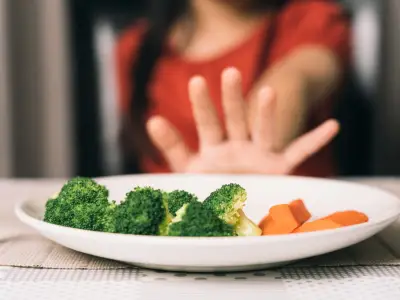A leading Norse god who could often be found alongside Odin and Thor on Viking altars, Freyr was one of the most beloved of the Norse deities. However, despite his ancient popularity he hasn’t maintained a very prominent presence within modern popular culture… unless you’re well-versed in the Norse gods and goddesses.
As part of our ongoing series in support of our Norse mythology diploma course, we’re going to put your knowledge of this Lord of the Norse pantheon to the test!

Table of Contents
Who is Freyr?
Freyr was the son of Njord, a Vanir god of the sea, and was the twin brother of Freya, the goddess of love and fertility (among other things). Much like Freya, Freyr was numbered with the Aesir - the ruling gods and goddesses of Asgard - after the conclusion of the Aesir-Vanir war. The willingness of the Aesir to embrace Freyr (despite his leading role in the war) was probably at least in part due to his warm and charming personality. Freyr was the husband of Gerd, the daughter of Gymir the giant, and ruled over Alfheim, the home of the peaceful and gracious elves. Within Alfheim, Freyr was attended by a husband and wife pairing of servants named Byggvir and Beyla. According to one significant Norse poem, Freyr was “hated by none” and was an especially popular god to honour at weddings and feasts. His golden boar and magic ship were considered to be two of the six magical treasures of the gods.
What is Freyr the God Of?
Freyr was primarily the Norse god of peace and prosperity and was associated with love, masculine virility (hence him often being depicted with a large phallus) and the good summer weather that led to bountiful harvests. Freyr’s benevolence in terms of sexual favour manifested in a somewhat promiscuous nature. This handsome deity was even said to have engaged in incest with his sister. However, this accusation was levelled against him by Loki, the notorious trickster god, so it must be taken with a grain of salt! With such allegations, Loki sought to discredit the entire Vanir clan by claiming that Freyr and Freya were themselves the product of Njord lying with his sister. Freyr was also considered to be a fierce Norse warrior god, although his muscular frame was often portrayed as being enclosed in farm clothes rather than armour.
Want to put your knowledge of the Norse pantheon to the test?
Centre of Excellence has you covered.
Visit our Norse Gods and Goddesses Hub to sample the first 2 modules of our £127 Norse Mythology Diploma Course for FREE
Freyr Pronunciation
Freyr’s name was pronounced “frei-r”. In old Norse, the vowel was long and was essentially a combination of the sounds for “e” and “y”. The final “r” sound would have been elongated by rolling it. The name “Freyr” means “lord”, and is therefore simply the masculine counterpart of “Freya”, which means “lady”. The proto-Germanic name for Freyr was probably “Ingwaz” (also rendered as “Yngvi”).
Freya and Freyr
Freyr and his sister Freya are frequently portrayed as twins and are thought to be two sides of the same coin. During the Aesir-Vanir war, brother and sister fought as a duo and were the bane of Odin’s forces. Likewise, following the conclusion of the war, the siblings joined the Aesir as a pair, initially as hostages but then as contemporaries.
More Facts About Freyr
- Much like his sister, Freyr had a special affiliation with boars. They were often the favoured animal sacrifice at feasts and festivals that honoured him. Although he also loved horses, Freyr was usually accompanied by Gullinbursti, a remarkably swift mechanical boar that was forged by the dwarf smiths Brokkr and Sindri. Gullinbursti sported golden hair and bristles that glowed so brightly that they illuminated the area around him. Sometimes, Gullinbursti drew a chariot for his master to ride in. Even today, Swedish Yule cakes are baked in the shape of a boar in acknowledgement of the old traditions of Freyr.
- One of Freyr’s most prized possessions was a dwarf-forged ship that was named Skidbladnir (literally “Assembled from Pieces of Thin Wood”. This vessel always had a favourable wind in its sails and could house the entire army of the Aesir. However, it was also able to be folded up and contained within Freyr’s pocket!
- According to the legends, Freyr first saw his future wife, Gerd, while he was seated upon Odin’s throne in Asgard. This throne - named Hlidskjalf - allowed a view over all the realms of creation. After seeing the loveliness of Gerd, Freyr was overcome with despair that he might never possess her. His father’s servant, Skirnir, was therefore sent to woo Gerd on Freyr’s behalf, although Skirnir first demanded Freyr’s sword. The errand was successful, and Gerd agreed to meet and marry Freyr in a wood named “Barey” nine nights later.
- The sword that Freyr surrendered was a wondrous weapon that could actually fight independently of its master. It was named “Sumarbrander” (literally “summer sword”). The loss of this weapon became a thorn in Freyr’s side. First, it led to him having to slay the giant, Beli, with a deer’s horn: an act that left him badly scarred. It then contributed to his untimely defeat at Ragnarok, the Norse apocalypse event. Like the fate of many gods, Freyr’s death was foretold, and his attempt to confront the formidable fire giant, Surtr, without his sword was ultimately his last act. Some tales even tragically tell that Surtr would wield Sumarbrander during the duel! However, Freyr did manage to destroy his vanquisher even as he fell in the heat of battle. Freyr’s death was thought to echo the death of growing things during the cyclical birth/death of seasons.
If you’d like to find out more about Freyr and the rest of the Norse pantheon, then be sure to visit our Norse Gods and Goddesses hub, where you can access the first two modules of our fantastic Norse mythology diploma course absolutely FREE of charge.
Want to put your knowledge of the Norse pantheon to the test?
Centre of Excellence has you covered.
Visit our Norse Gods and Goddesses Hub to sample the first 2 modules of our £127 Norse Mythology Diploma Course for FREE




